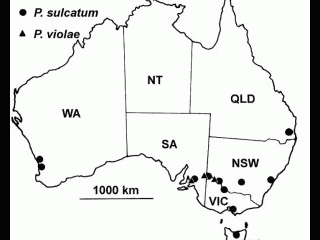Cavity spot disease is a problem of carrots that is mainly caused by the soil-borne fungus Pythium sulcatum in Australia. In order to minimise build-up of this pathogen, we needed to establish its host range so that we could reduce the risk of it building up on other crops in rotations. This involved a series of experiments growing seedlings in infested soil in the field, and then isolating pythium from the seedling roots.
These experiments showed that P. sulcatum could infect members of the carrot family (carrots, celery, parsley, parsnip, blue laceflower), but it did not infect vegetables from other plant families (beans, beetroot, broccoli, capsicum, cucumber, lettuce, maize, musk melon, onion, spinach, tomato). P. sulcatum did not infect the cereals (barley, oats, rye, wheat) that carrot growers use as nurse crops for wind protection.
Another fungus, Pythium violae, is the main cause of cavity spot disease in Europe and North America. In Australia it occurs in carrot growing areas along the River Murray in Victoria and in South Australia (Figure 1).
Overseas work has shown that P. violae can infect wheat and broccoli. It has a much wider host range than P. sulcatum.
Figure 1 Pythium sulcatum, P. violae distribution in Australia
Acknowledgement
This research by Elaine Davison and Allan McKay was part of project VG9801, funded by Horticulture Innovation Australia and the National Vegetable Levy.
Further information
Davison, EM and McKay, AG 2003, Host range of Pythium sulcatum and the effect of rotation on Pythium diseases of carrots. Australasian Plant Pathology 32, 339-346.
Schrandt, JK, Davis, RM and Nunez, JJ 1994, Host range and influence of nutrition, temperature, and pH on growth of Pythium violae from carrot. Plant Disease 78, 335-338.


